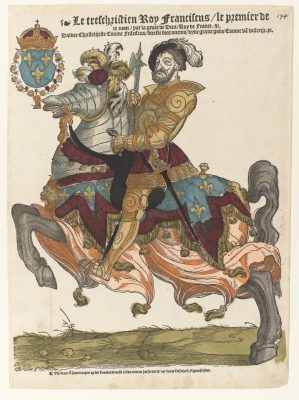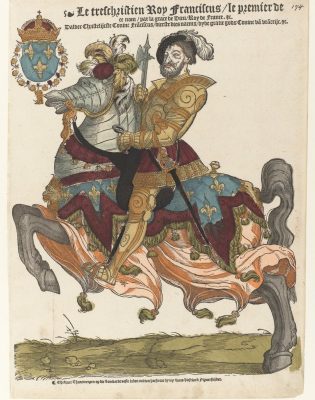In the history of European printmaking, engravers seem to get all the ink. In contrast, woodcut designers, let alone their block cutters, often remain obscure, and only during the past generation, led by examination of the great Antwerp printers such as Hieronymus Cock and Philips Galle, have print publishers received overdue attention. Now the essential New Hollstein series turns its attention to a dynasty of Netherlandish printmakers, active in all these roles for over a century: the family Liefrinck of Antwerp. Compiling their diverse and extensive print output comprehensively has been a herculean labor, emerging from a dissertation project at Leuven University by a brilliant young scholar, Jeroen Luyckx. His new publication fills a major lacuna in our understanding of sixteenth-century Netherlandish printmaking. A very useful introduction outlines the biographies but does not do justice to Luyckx’s careful sleuthing across print collections in both Europe and America, uncovering numerous unrecorded prints and impressions.
The significance of the first generation of Liefrincks spans the major axis of early Northern printmaking, including major contributions to German woodcuts. Both Cornelis I (d. 1528) and Willem Liefrinck (d. before 1538/1546) moved to Augsburg and worked there during the teens as block cutters on several of the monumental print projects for Emperor Maximilian I (d. 1519): Habsburg Saints (nos. 9-19, after designs by Leonhard Beck); and substantial parts of the Triumphal Procession (nos. 24-46, after designs by Hans Burgkmair and Albrecht Altdorfer, as well as Beck and the Dürer shop, assigned conventionally to Hans Springinklee).[1] Along with the more famous, self-aggrandizing Netherlandish block cutter around Burgkmair in Germany, Jost de Negker, both Liefrincks also worked at the fountainhead of major innovations in German prints, even including Burgkmair’s 1508 King of Cochin (no. 49) from the frieze roll of peoples of the Indian Ocean voyage, which provides a date for Cornelis’s earliest arrival in Germany.[2] Their carving identities are established by monogram signatures on surviving blocks in Vienna and Berlin (figs. 1-2), examined by major Viennese scholars of the late nineteenth century.
On their return to Antwerp after the death of Maximilian, the Liefrincks used their experience in organizing print processes and thus remained carvers for major multi-sheet projects. Cornelis’s return can be documented by a previously unrecorded prayer card of 1522 (no. 3), whereas Willem became a burgher of the city and publisher there as of 1526/27, admitted to the guild of St. Luke in 1528/29. Willem published the mounted equestrian series of Sultan Süleyman and his Cortege, after Jan Swart (1526; nos. 50-54) as well as Jan van Scorel’s important two-sheet Deluge (no. 1, signed; a previously unrecorded Nuremberg impression). But Willem also published other major multiples: a six-sheet Children’s Procession with religious symbols (no. 8); a hand-colored Psychomachia (1536; nos. 4-7; Berlin); plus an attributed 1537 set of Four Seasons after Monogrammist AP (nos. 20-23) with triumphal chariots; and a vast skyline city view of Louvain (1536-40; no. 57, 18 sheets[!]).[3] Also after Monogrammist AP Willem produced a four-sheet Brothel Scene (1536-40; no. 55), a work close to the Brunswick Monogrammist’s genre panels. Cornelis’s widow Margriet also kept up that brother’s print publications with major works, including a copy of Dürer’s Great Triumphal Chariot (1545; no 47; 8 sheets) and the woodcut series after Titian, Triumph of Christ (1545; no. 2). Willem’s daughter Willemyne (or Mynken) married engraver Frans Huys and ran a business of her own, which included printing, coloring, and selling prints as well as maps, especially for publisher Christophe Plantin, but not under her own address.[4]
The next generation featured the son of Willem, Hans I Liefrinck (ca. 1515-73), best known of the family, who became a master in the St. Luke’s guild in 1538/39. His published prints make up the bulk of this two-volume catalogue.
Hans Liefrinck is celebrated for his hand-colored woodcut portraits, often on horseback, after Cornelis Anthonisz. (1539-53; nos. 28-32, 34-39, 41-68), once part of a Gotha album and featured in an earlier Amsterdam exhibition on princely portraits.[5] Many survive in those unique impressions, usually hand-colored (and to the credit of Sound & Vision, they are all reproduced here in color). Other projects by Hans I include: strapwork cartouches with Latin inscriptions (1556; nos. 72-95); triumphal arch designs for the 1549 Joyous Entry of Prince Philip II to Ghent (nos. 97-101); and a depiction of Antwerp’s new city hall after Hans Vredeman de Vries (1564; no. 96). But Hans Liefrinck also published multi-sheet regional maps, both woodcuts and etchings, works often omitted from other print catalogues (1557-66; nos. 23-25), plus such newsworthy phenomena as a 1553 celestial halo over Antwerp (no. 22) and a monstrous calf (no. 69). One rare but often-cited genre woodcut depicts a Hennetaster, or Henpecked Husband (no. 27; Antwerp) with accompanying comic verses.
But after mid-century, Hans Liefrinck began to publish a number of intaglio prints after other artists. Included among those are etched biblical scenes of Nebuchadnezzar and John the Baptist after Jan Swart and Lambert van Noort (ca. 1558; nos. 1-21), which shows that Hans himself experimented with that relatively new medium; although his prints’ relation to the artists’ original designs remains uncertain, glass panels replicate several designs from the series. Again, the indefatigable Luyckx has uncovered unrecorded etchings (e.g. Boston, no. 20) that he can associate with this larger series.
Commissions for intaglios from diverse artists and organization of a print publishing house by Hans I Liefrinck, continued by his son Hans II and his widow Catherine Cordier, made him a major competitor to the better-known leader of that field in Antwerp, Hieronymus Cock, or Gerard de Jode. Presumably it also entailed adding a new roller press. Luyckx has also located the Liefrinck house, principally at addresses on the Lombardenvest: at the White Greyhound and then the Golden Turk’s Head. Thus Volume Two of this catalogue, nos. 121-310, provides a vital new addition to the history of Antwerp engravings.
An early venture was Hans’s three-plate View of Antwerp from the Left Bank by his brother-in-law Frans Huys (1556; no. 206), plus a four-sheet aerial view of the city by Pieter van der Heyden after Lambert van Noort (1569; no. 207), a work dedicated to the Antwerp city council. Like Cock’s press, the Liefrincks’ output comprised a diverse print portfolio: New Testament prints and saints, especially by the Wierix brothers after various artists; mythologies and antique ruler portraits (a large, previously unrecorded series, nos. 175-200); but also grotesque heads after Leonardo da Vinci and ruler portraits of Valois and Habsburg royals, mostly at full-length.[6] For Hans II, Abraham de Bruijn, who would go on to make a celebrated costume book (1577), engraved attractive animal prints, and Hans Collaert produced decorative metalwork pendant designs akin to contemporary German decorative prints. The vogue for ornamental masks after Cornelis Floris was supplied by Frans Huys (1539-60; nos. 279-96) along with strapwork cartouches by Harmen Jansz. Muller after Jacob Floris. The latest prints date from 1588. Hans II possibly moved to Cologne before he died there in 1597. Other relatives, sons of Cornelis I, moved to Leiden and were active there as well.
Jeroen Luyckx has produced a meticulous and informative new addition to the important catalogues of Netherlandish prints by Sound & Vision, and they have given proper attention to proper print reproductions in these volumes. With the Liefrinck dynasty of block carvers and print publishers, Luyckx presents a vital link between Antwerp and Augsburg, and adds to the range of sixteenth-century Antwerp print production. In the process, Netherlandish woodcuts, often ignored in the century since Wouter Nijhoff, also regain some lost glory in these attractive pages.
Larry Silver
University of Pennsylvania

- Larry Silver, “Blijde Uitgave: Early Dutch Large Woodcut Ensembles and Politics,” in Arnout Balis, Paul Huvenne, Jeanine Lambrecht, and Christine Van Mulders, eds., Florissant. Bijdragen tot de kunstgeschiedenis der Nederlanden (15de-17de eeuw) (Brussels, 2005), pp. 65-77.
- Stephanie Leitch, “Burgkmair’s Peoples of Africa and India (1508) and the Origins of Ethnography in Print,” Art Bulletin 91: 2 (2009), 134-59. Only one block bears the monograph of Cornelis, but he might have carved other blocks of the same series.
- Jeroen Luyckx, “Civitas Lovaniensis: An Integrated Analysis of the Oldest City Portrait of Leuven and the Woodcuts of Monogrammist AP,” in J. Beckers, A. Vogels, J. Van der Stock and L. Watteeuw, eds., Imaging Utopia: New Perspectives on Northern Renaissance Art (Louvain, 2021), 96-110.
- Dirk Imhof, “The Enterprising Mynken Liefrinck: Coloring, Printing and Selling Maps and Prints in Sixteenth-Century Antwerp,” Simiolus 42 (2020), 220-40.
- Vorstenportretten uit de eerste helft van de 16de eeuw, exh. cat. (Amsterdam: Rijks-museum, 1972).
- M.W. Kwakkelstein and M. Plomp, eds., Leonardo da Vinci. The Language of Faces, exh. cat. (Haarlem: Teylers Museum, 2018).
